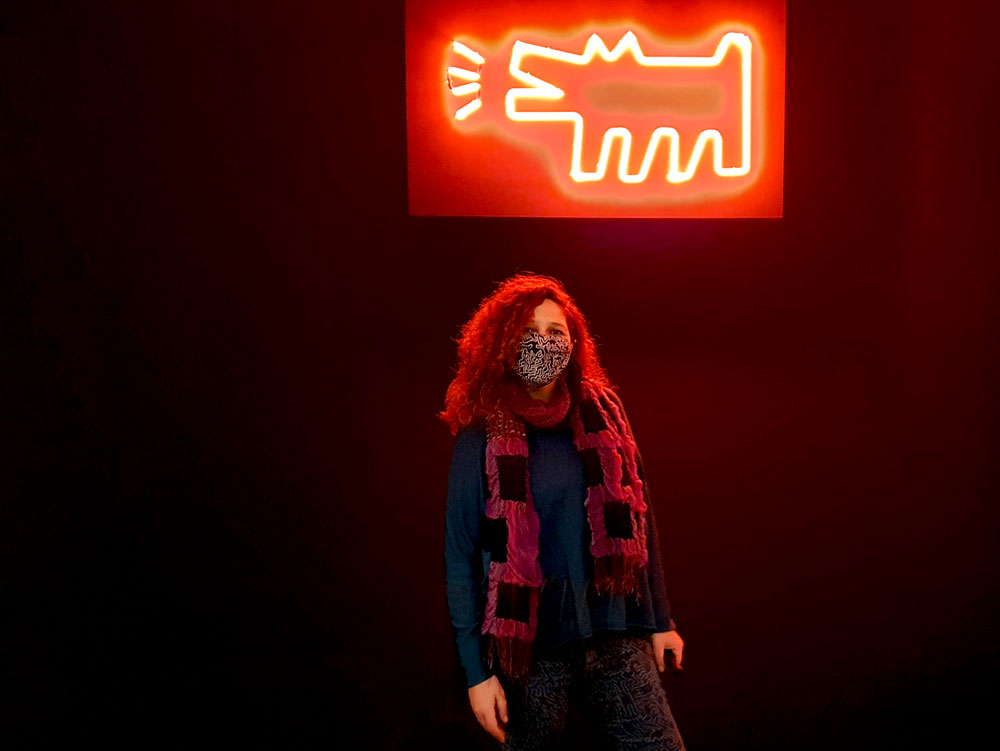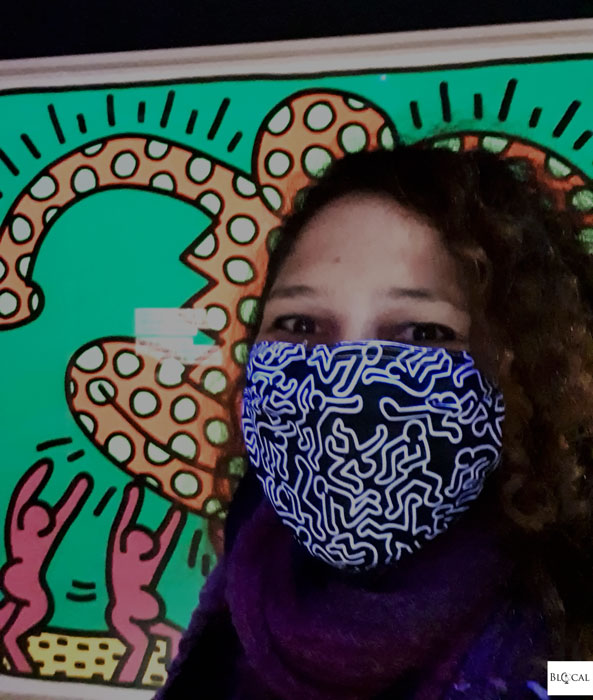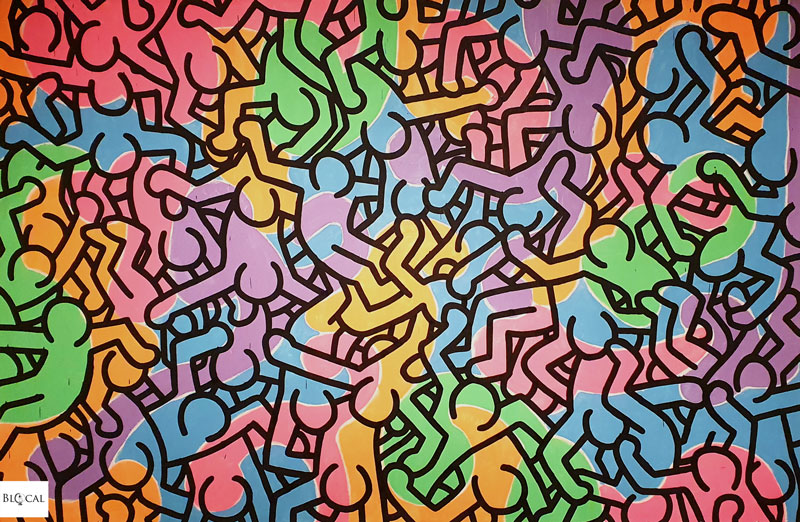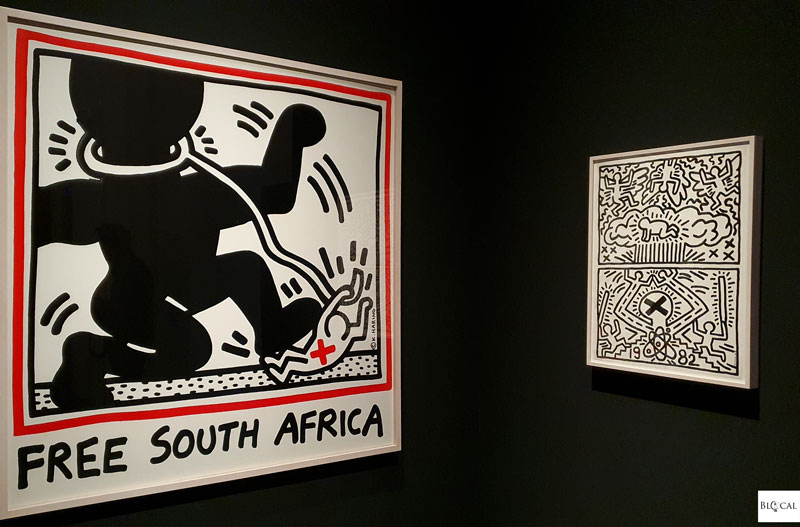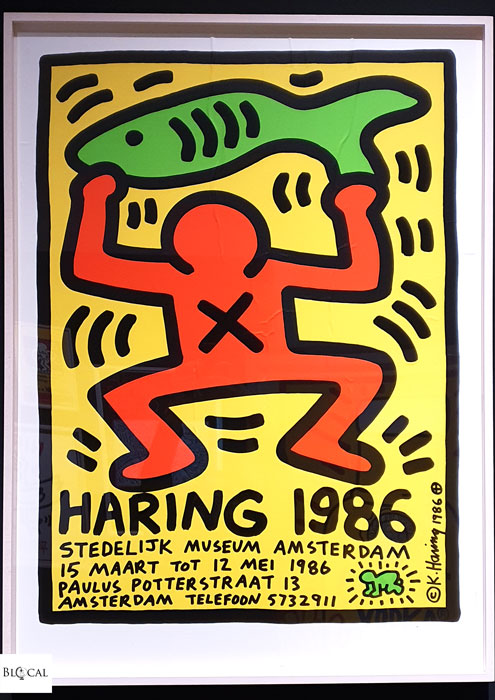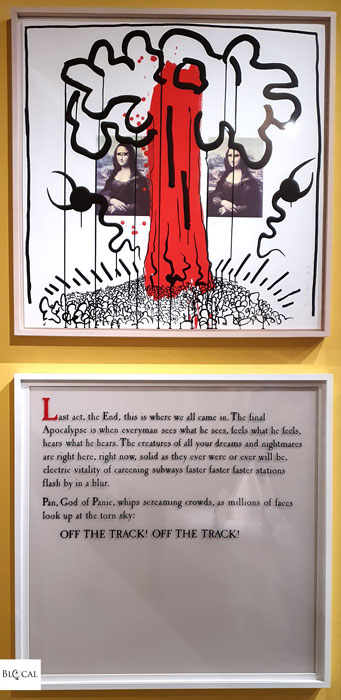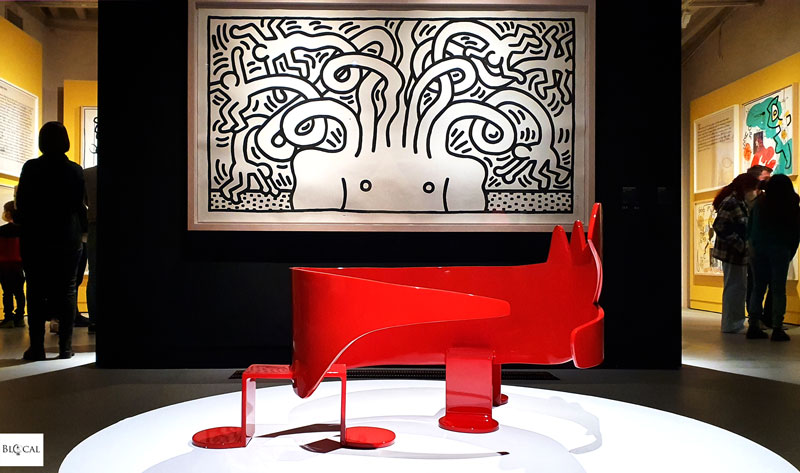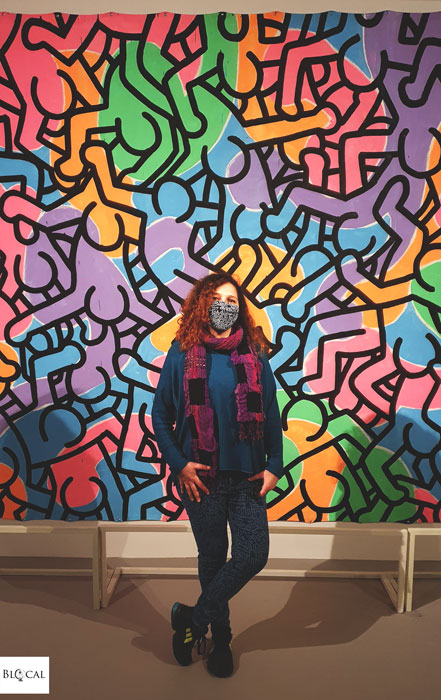In the great exhibition of Keith Haring‘s works that is about to end, more than 170 artworks from the Nakamura Keith Haring Collection (Japan) are on display for the first time in Europe. Needless to say, as the avid Keith Haring fan I am, I couldn’t miss this exhibition at Palazzo Blu in Pisa, the city where Keith Haring painted his last mural.
Tracing his artistic career from start to finish, the exhibition shows Keith Haring’s faith in art’s power to change the world by spreading a message of peace and unity.
The show opens with Keith Haring’s early drawings in the New York subway, which he did to bring art closer to people, all kinds of people.
“It is increasingly clear to me that art is not an elitist activity reserved for the appreciation of the few: art is for everyone, and this is the purpose for which I want to work.”
Keith Haring
The inspiration came from comic strips, hence the frame and the self-contained narrative.
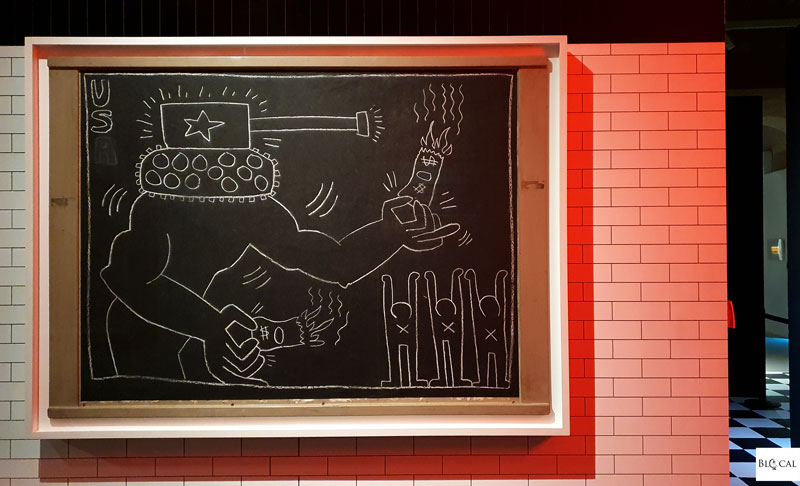
Back then, the New York subway bustled with graffiti’s explosive potential, and although Keith Haring wasn’t part of the graffiti movement, its energy undoubtedly influenced his art. However, unlike graffiti artists who were clandestine and avoided the public eye, Keith Haring was purposely looking to interact with New York commuters. He liked to have an audience for his art and considered a piece of art “complete” only if someone else had been there to witness its birth.
Still, what he was doing was illegal and -therefore- demanded rapidity in the execution and a message quickly accessible through a universal language. Keith Haring then developed a series of symbols, an alphabet of icons that would touch on universal topics like love, life, death, pop culture, and politics.
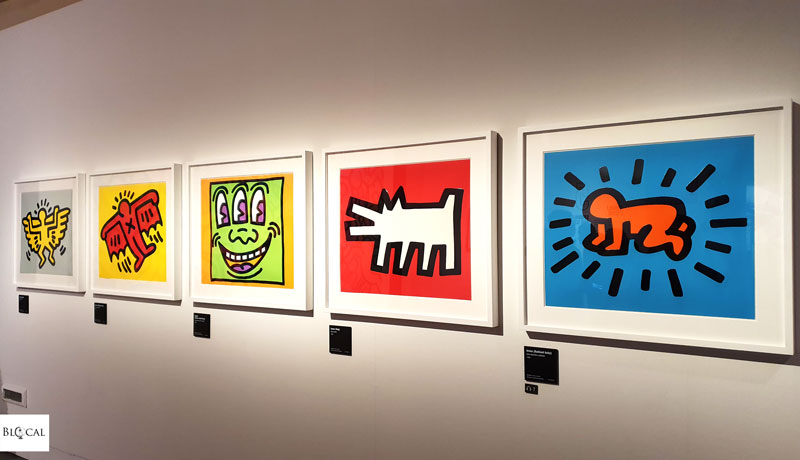
His underground sketches caught the attention of gallery owner Tony Shafrazi, who organized the first solo exhibition of Keith Haring’s works (1982). For this exhibition, Keith Haring created a series of works in fluorescent paint dedicated to the female creative force.
Read also: Meeting with Julia Gruen at Keith Haring show in Liverpool (2019)
The inclusivity of Keith Haring’s art also applies to children, whose universe had been an excellent inspiration for Keith Haring.
“Children know something that most people have forgotten.”
Keith Haring
Keith Haring had a special connection with children, and his commitment to them would be consistent. He did many projects with and for children, from cheerful murals on pediatric hospitals worldwide to collections like “The Story of Red and Blue.”
The story of red and blue is a series of 20 lithographs with simple drawings in red and blue, inviting children to imagine a story that would lead to the last picture: a violet egg representing the moment when the two colors meet and merge.
In the same room, we find the Flowers series (completed in 1990) that, at first glance, evokes the cheeriness of a child’s drawing.
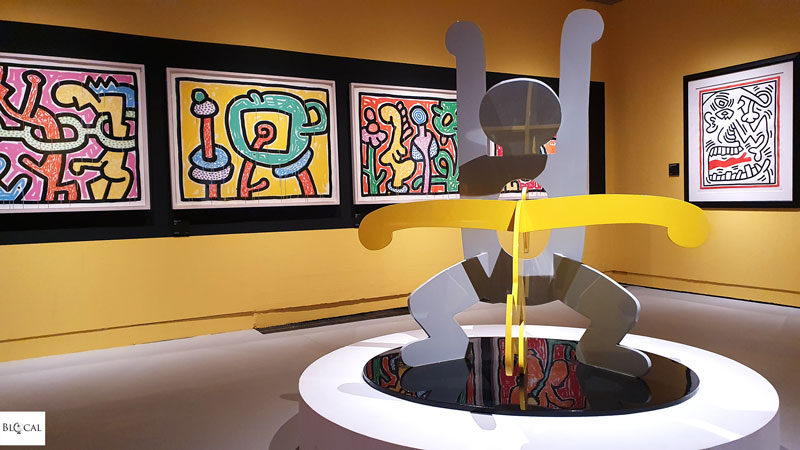
However, the color technique used for the Flower series gives the images a rough appearance that stands for fragility and death, while the phallic shapes of the flower allude to sexuality.
A similar technique (sharp black contours upon a layer made of abstract forms in brilliant colors) is also at the center of the artwork commonly referred to as “People” (1985). Recognized as one of his masterpieces, it depicts a multitude of people in the most varied poses, crowding the entire space of the canvas.
Alongside spreading a universal message of joy, Keith Haring cared about bringing issues like AIDS prevention, gay rights, apartheid, racism, drug use, wars, violence, nuclear disarmament, and environmental protection to public attention.
Influenced by his friend and mentor Andy Warhol, Keith Haring used posters to get his messages to a larger audience. His ubiquitous image started to be sought after for publicizing brands, music concerts, and cultural events, including his own exhibitions worldwide.
Without distancing himself from commercial works, Keith Haring was able to raise the posters to the status of actual artworks, as shown in this part of the exhibition.
“The first thing I want to do is break down the barrier between commercial and traditional art.”
Keith Haring
Keith Haring collaborated with all kinds of artists to create imagery to accompany their works, from the 1983 cover of David Bowie’s album “Without You” to the collaboration with Beat writer William Burroughs for Apocalypse (1988), a silkscreen edition realized after Keith Haring was diagnosed with HIV -hence the dark and violent themes.
Keith Haring collaborated with many musicians, creating covers and posters for various albums, especially in the rap scene. Music was vital for Keith Haring. The New York clubs of the 1980s were a constant source of inspiration for him. He compared that experience with the traditional ceremony of native Americans, which -in turn- he considered a representation of that primal energy shared by ancient societies not of Western origins -like the Aztecs, the Eskimo, the African, and the Afro-American.
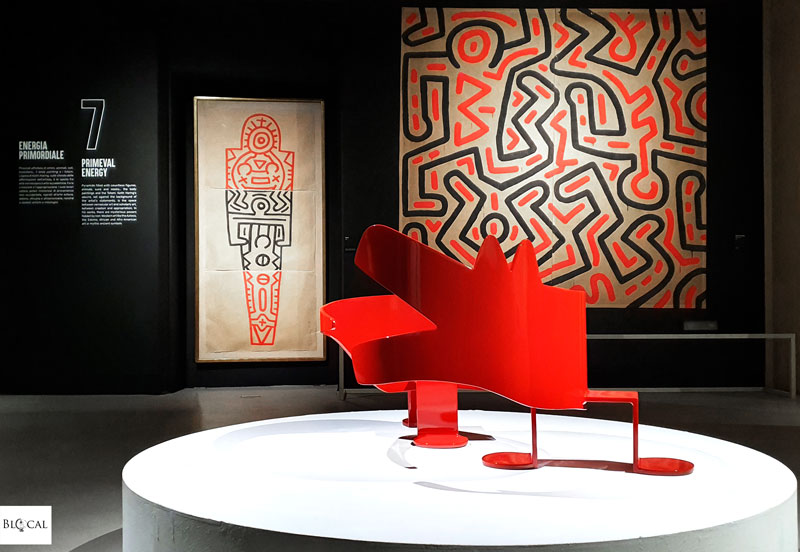
Recalling tribal art is also Keith Haring’s use of color: a limited palette made of a few colors, without shadows nor nuances.
Even his body painting performances, born as an artistic exploration of yet another medium, recall tribal ceremonies and show Keith Haring’s fascination for ancestral traditions.
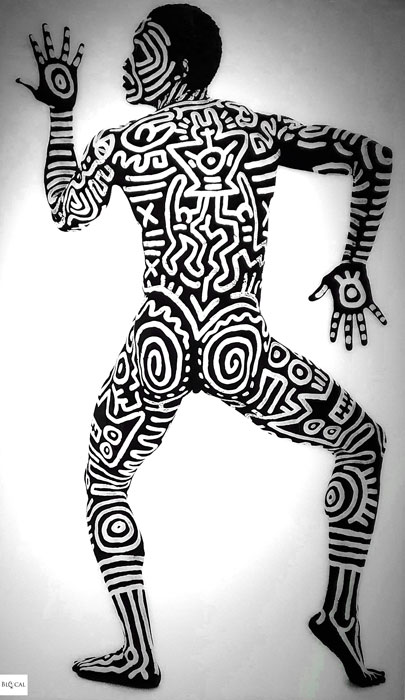
In the last segment of the exhibition, we find The Blueprint Drawings, his latest work, and a tribute to his beginnings.
Published one month before his death, this final portfolio of 17 silkscreens recreates his earliest symbols and scenes.
“Looking at these works is like entering a time machine and going back to the great days I experienced for the first time in New York.”
Keith Haring
Representing his purest visual narrative, this series features all those iconic figures that stayed with him throughout his career -an artistic testament of sorts, like the latest mural he painted before his passing away, “Tuttomondo”, which is just a few meters away from the museum that hosts this exhibition.
Watch my travel vlog from Pisa!
